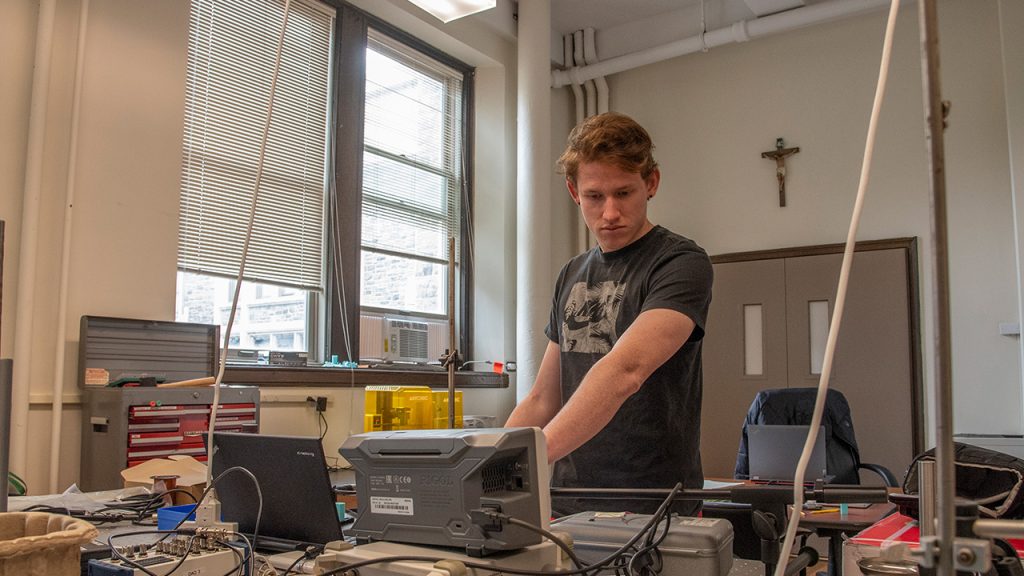Make a sound and it spreads outward, everywhere, like ripples from a stone tossed in a pond. But what if we could control how and where it flows?
That’s the question driving the summer research of Jackson Saunders, a rising senior at Fordham College at Rose Hill. In a Fordham lab, he’s building chambers to split and direct the flow of sound, pursuing research that could impact not only acoustics, but bulletproofing, rocket design, and more.
Innovative Acoustics
Saunders, a physics and philosophy double major, is working under the guidance of Camelia Prodan, Ph.D., the Kim B. and Stephen E. Bepler Professor of Physics at Fordham. Supported by a summer fellowship from Fordham’s Campion Institute, Saunders is building on Prodan’s research into acoustic techniques inspired by topological materials.
First discovered around 1980, these materials intrigue scientists because of their internal configurations, or topology, that guide electricity into precise streams separated by gaps that block current. A topological insulator, for instance, can channel electricity along its surface but keep it from passing through to the other side.
Since then, scientists have found that such segmented flows can be seen beyond electricity.
Prodan published research in January showing that acoustic materials can be designed to guide the flow of sound in a similar way.
Building Sound Chambers in the Lab
Based on that research, Saunders is building a series of sound chambers that mimic the internal symmetries of topological materials, perfecting a design that will split sound in the same way that topological materials direct electricity into discrete streams.
It’s a project that showcases physics that dates back to Isaac Newton, Saunders said, with the behavior of atoms and electrons being recreated in larger objects like the sound chambers he’s making with a 3D printer.
“We’re taking a very well-studied quantum mechanical effect and realizing it” with classical physics, he said. “What’s novel about what we’re doing is we’re showing that we can create specific applications … using this classical mechanical approach.”
Through the project, he’s helping to build knowledge that could have many uses, from making better soundproofing materials to reducing urban noise pollution to designing rooms that contain all the sound generated within them—even if one side is open.
From Better Bulletproofing to Quantum Computing
Studies of topology-based sound flows could have implications for other innovative materials as well, he said. These could include bulletproof vests that dissipate a bullet’s impact along their surface or a rocket built to channel vibrations along its surface during takeoff without rattling the electronics within.
Topological materials could also be applied in the development of quantum computers that have vastly greater processing power. “Any field that has computation, quantum computing will benefit,” so it’s exciting to be working on questions related to that, no matter how tangentially, Saunders said.
In his research, he has an eye on the past as well as the future. “I’m doing work that is at the leading edge of a 400-year legacy of scientists, and that’s motivating,” he said. “You want to be part of that.”


